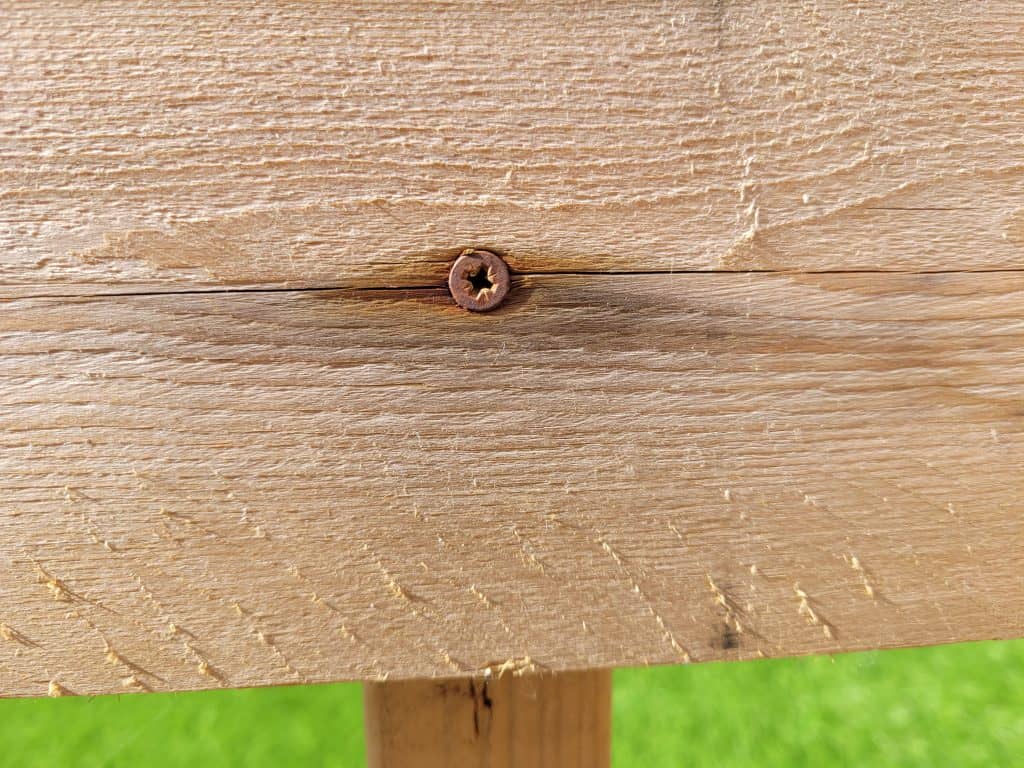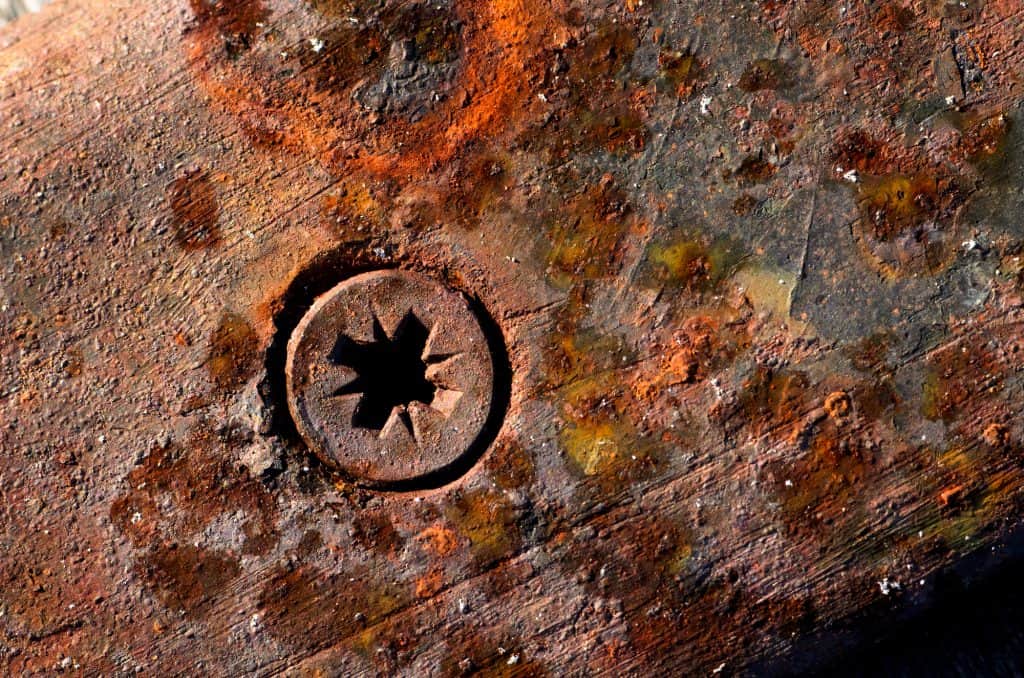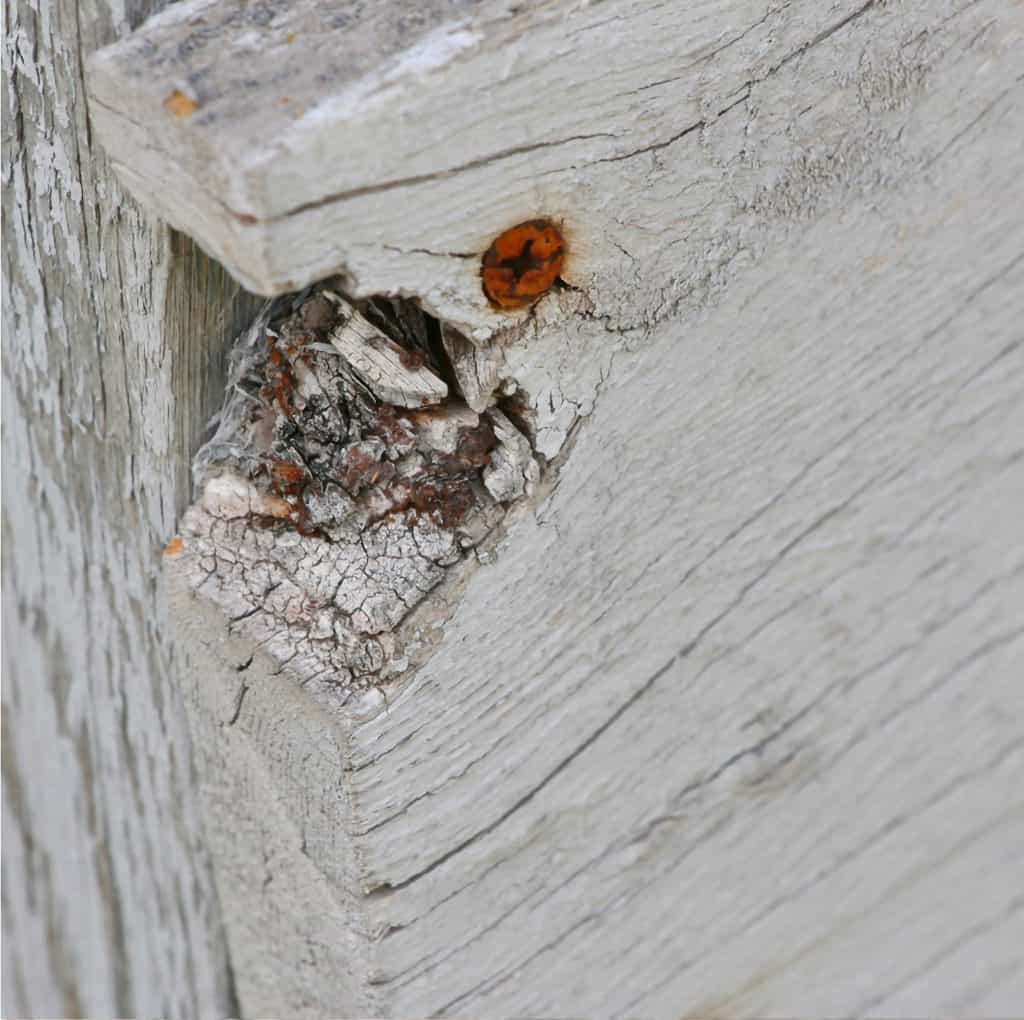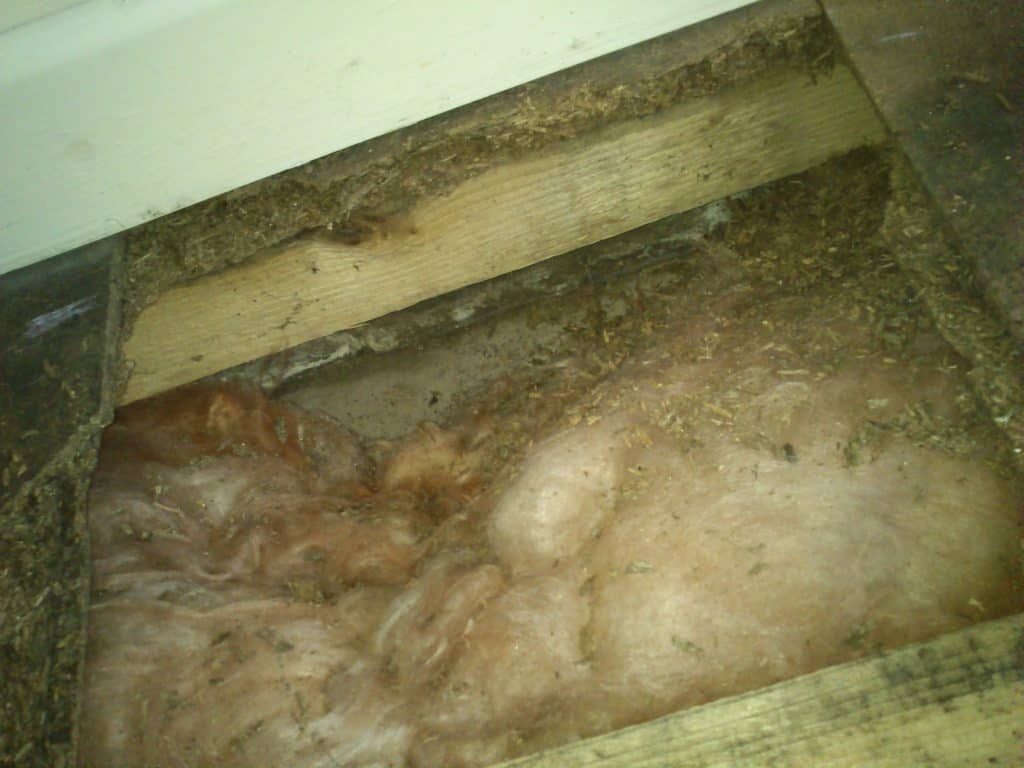If you have spent a lot of time around your house, you may have noticed that there are dark spots showing up around the screws. Regardless of whether you did this on your own, you might be concerned because your screws are changing color. It is one thing for you to change color, but you might be even more concerned if you notice that the dark spot is spreading to other areas of the wood or drywall throughout your house.
Is this something that you need to be concerned about? Or, is this a normal process? The answer is that it depends, and there are several important points you need to keep in mind. What do you need to know about screws and accompanying screw holes turning black or dark, and what do you need to do next?
Why Screws and Screw Holes Change Color Outside

If you noticed that your screws and screw holes are changing color outside, this is probably due to rust. Your screws are exposed to continuous sunlight and heat throughout the day. Eventually, your screws will start to rust.
Then, when the screws start to rust and collect heat, it will damage the surrounding wood or drywall outside, causing the associated screw hole to change color as well.
There are certain materials that do not rust. For example, if you have galvanized screws or screws that are coated in zinc, they may not necessarily rust if you leave them outside. On the other hand, most other materials will eventually begin to rust, and the screws will start to turn dark. If you live in an area that gets a lot of rain, you may notice that your screws begin to rust more quickly.
Why Screws and Screw Holes Change Color in Indoor Environments
There are several reasons why your screws and screw holes might change color in an indoor environment. On the other hand, why does this happen inside? Some of the most important points to keep in mind include:
- First, understand that just because your screws are inside doesn’t mean that they cannot rust. For example, your screws might be exposed to the sun during the day, and that can cause them to turn dark.
- It is also possible that your screws might have been exposed to a lot of heat. For example, you may turn off your HVAC unit when you are gone during the day to save money. If the screw is also exposed to direct sunlight, the tremendous amount of heat could cause your screw and associated screw hole to turn dark brown.
The screw turns dark brown because it is exposed to the heat, and the heat is passed to the wood or drywall, causing the hole to turn dark as well. - It is also possible that the screw could turn dark because the inside environment is too moist. Extra moisture can cause the screws to rest more quickly, and it could cause the screws to turn dark. You may want to check the interior of your home to see if the humidity level is too high.
- Finally, if you smoke cigarettes inside, or if you burn incense in your house, it could cause your screws to turn dark.
These are a few reasons why your screws may start to turn color in an indoor environment. You need to understand why this happened so that you can take steps to prevent it. Understand that the exact causes will depend on what your screws are made out of.
How Do You Fix or Clean Dark Screws and Screw Holes?

If you want to remove the dark coating from the exterior of your screws, you have a few options available. The most popular option is to use vinegar. If you believe you can remove the screw from the screw hole without compromising the integrity of your house, you may find it easier to clean the entire screw. After all, if you leave the screw in place, you may not be able to clean the entire thing.
You should remove the screws that have changed color. Then, drop them in a cup that has a lot of white vinegar. You should leave the screws in the cup for approximately one day. Then, the next day, take a cruise out of the tub. If you use a brush to scrub the screw, the rust should come right off. This YouTube video shows a bolt, but it’s the exact same process with a rusted screw:
If you feel like the vinegar is not doing a good enough job, you can also use hydrochloric acid. It is stronger than vinegar, and it should get the rust right off; however, you need to use extreme caution if you work with strong hydrochloric acid. It can burn if it gets on your skin, so you need to use gloves.
It is difficult to clean a dirty screw hole. If the screw hole has changed color, you might be better off painting over it or refinishing the entire surface. The same trick is unlikely to work if you try to clean the screw hole.
Once you are done, you need to put the screws back into place. That way, the structure remains strong.
Are Stained or Rusted Screws Weaker?
Yes. If your screws are rusted over, they are a bit weaker. That is because when the screw rusts over, the strong iron or steel has been replaced with an oxidized powder that is not nearly as strong. If you clean off the rust, it may make the screw look better, but it does not necessarily make it any stronger.
After all, you have not reversed the chemical process that has taken place because all you have done is remove the rust from the surface of this group. Therefore, you need to understand that a rusted screw may impact the structural strength of the building.
If you believe that the screw is very rusty, you might be better off replacing the entire thing. That way, you put a strong screw in place, and you can reduce your chances of dealing with a major problem down the road. If you have questions about the number of rusted screws you see in a portion of the house, you might want to reach out to a contractor who can come and do a professional inspection.
Does the Wood Need To Be Replaced?

If you notice that the wood or drywall is starting to change color, you might be wondering if that needs to be replaced as well. There is a chance that wood or drywall that has changed color could be more susceptible to wood rot. That is because, as the screw has oxidized or rusted over time, a gap may have formed between the screw and the wood. This could compromise the integrity of the rust, making it easier for moisture to get in between the screw and the wood.
When moisture gets in, it could increase the process of wood rot, meaning that you may have a serious repair on your hands. It takes a long time for this to happen, but you should keep a close eye on the color change. If you notice that the color changes expanding in the wall, or if you see cracks starting to form in the wall, they need to be addressed as quickly as possible.
Regardless of whether you are dealing with wood or drywall, it is critical to keep an eye on the screw holes. If there is a problem, you are better off addressing it sooner rather than later. The sooner you get it fixed, the less expensive it will be, and the more you can protect the integrity of your home.
What Are the Most Common Signs of Wood Rot and Drywall Damage?

If you are wondering if you have wood rot and drywall damage that you need to deal with, there are several common signs that you need to watch out for. They include:
- You may notice that the color of your wood and drywall is beginning to change, and you need to address it as quickly as possible.
- You may notice that there are cracks forming in the wall, and these cracks may spread to other areas. You need to address these cracks quickly to prevent them from getting worse.
- You may also notice that the wood is beginning to splinter. It could even start to stick out from the wall, and that means you need to address it as quickly as possible.
If you don’t deal with these problems early, they can get worse. Wood rot is not something you should try to tackle on your own. It is something that requires a professional knowledge.
What Happens if My Screws Start To Pop Out?
Another common problem that you may notice with your screws is that they are starting to pop out of the wall. If you put screws in the wall, you expect them to stay there. Unfortunately, it can be frustrating if your screws start to pop out.
If that is the case, it indicates that there is a problem with the drywall. The drywall has to be properly secured to the frame. If the drywall is not secure to the frame, the screws will not stay on the wall. They will simply unscrew themselves, and they will pop out of the wall.
You may need to insert a few fasteners if you want the screws to stay on the wall, but the bigger issue has to do with the drywall. You may want to reach out to a professional who can do an inspection of the area to make sure the drywall doesn’t have any other issues.
How Can I Prevent the Screws From Rusting Over?
If you want to protect your screws, you need to prevent them from rusting. There are a few ways you can prevent screws from rusting. They include:
- Consider applying a coat of paint on top of the screws and the fasteners. If you use fasteners to get the screws into the wall, you can paint over them to protect them.
- There is also a special coating that you can apply to the screws to provide them with some additional protection against rust. You may need to reapply this solution from time to time.
- If you get screws that have been coated in zinc, you can prevent them from rusting. Zinc is resistant to rust, and there are screws available that have been made out of zinc.
- You should also take steps to reduce the humidity level in your home. If your house is too humid, it could cause your screws to rust more quickly.
If you take these steps to protect your screws from harm, you can reduce your chances of dealing with dark screws and dark screw holes.
